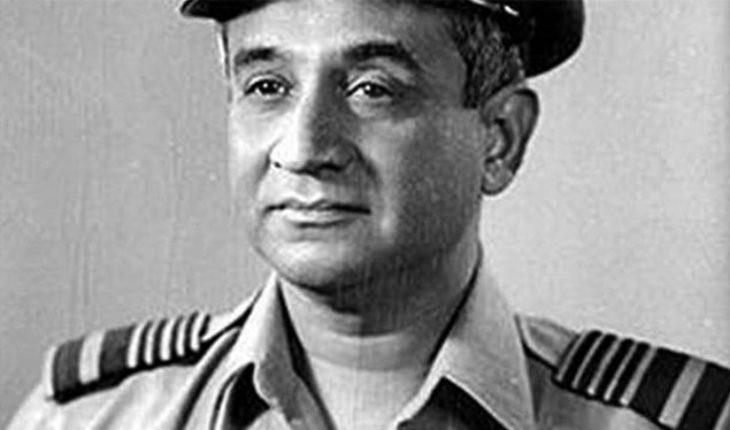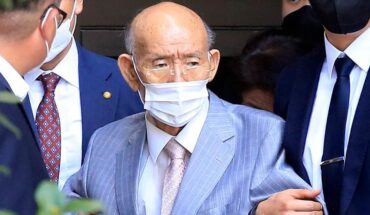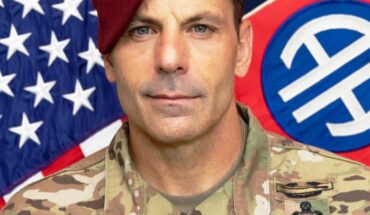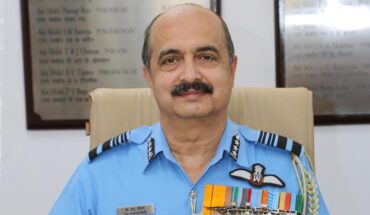Former Chief of the Indian Air Force, Air Chief Marshal Idris Latif died at his home in Hyderabad on April 30. He was 94.
Latif, who was Chief of the Indian Air Force from September 1978 to August 1981, was involved in various far reaching policy and equipment-related decisions as he slowly rose in the hierarchy from the Air Chief Marshal rank.
Air Chief Marshal Latif, who had rejected the offer to join Pakistan Air Force after partition, was appointed as the Chief of Air Staff on 31 August 1978 and he remained in saddle till 1981 when he retired.
He subsequently served as the Indian Ambassador to France and the Governor of Maharashta.
The official website of IAF states that when partition brought about the division of the Indian armed forces, Latif as a Muslim officer was faced with the choice of joining both India or Pakistan.
“Even though both Asghar as well as Noor Khan called him up to persuade Latif to join them in the fledgling Pakistan Air Force, Latif made it clear that for him, religion and country were not interlinked. It was no surprise that Latif made his way to become the first Muslim Chief of Air Staff of the Indian Air Force,” the IAF website states.
Air Marshal Asghar Khan later rose to become the Chief of Air Staff of Pakistan Air Force and he passed away in January this year in Islamabad.
Born in June 1923 in Hyderabad, Latif was commissioned in Royal Indian Air Force in 1942. On completion of his training at Ambala, he was posted to the No.2 Coastal Defence Flight in Karachi, where he flew vintage biplane aircrafts like the Wapiti, Audaxes and Harts, on Anti-Submarine flights over the Arabian Sea.
During 1943-44, he was one of the few Indian pilots to be seconded to the Royal Air Force in the United Kingdom. There he underwent training on more contemporary aircraft like the Hurricane and Spitfire, with the Operational squadrons of the RAF. He returned to India in 1944 and took part in the Burma campaign, flying the Hawker Hurricane for No.3 Squadron. This involved flying interdiction sorties against ground targets.
After the campaign, Latif was posted to Madras, but soon he joined No.9 Squadron in Burma, again flying the Hawker Hurricane. Under the command of Sqn. Ldr. Asghar Khan, he was good friends with both his CO and another flamboyant pilot, Flt. Lt. Noor Khan. Both the pilots went on to become Chiefs of Air Staff of the Pakistan Air Force.
After the war, Latif on, promotion to the Squadron Leader, became the Commanding Officer of No.4 Oorials, flying the Hawker Tempest. He led the first fly past over New Delhi, after India turned a republic in 1950.
During the 1971 Indo-Pakistan war, Latif was the Assistant Chief of Air Staff (Plans) in the rank of Air Vice Marshal, and carried out the onerous tasks of making first line assessment of frontline combat squadrons and the modernisation plans of the air force.
The IAF website also mentions that as the Chief of Air Staff, Latif was involved fully in the re-equipment and modernisation plans of the air force. He was instrumental in seeking government approval for the procurement of the Jaguar strike aircraft, a proposal which was lying dormant for over 8 years.
He also held negotiations with the Russians and saw the induction of the MiG-23 and later, the MiG-25 aircraft into the IAF. One of the last acts before retirement was to fly in the trisonic MiG-25, which was then just assembled from a semi-knocked down condition by the Air Force personnel.
Latif breathed his last at a private hospital, where he was admitted last week with pneumonia, family sources said. He is survived by three children. His wife Bilkees Latif, a noted social activist and writer, died in October last year. He was buried at a burial ground in the old city of Hyderabad May 1.
Born on June 9, 1923 at Hyderabad, Latif joined the Royal Indian Air Force in 1941 at the age of 18 and was commissioned in 1942. During 1943-44, he was one of the few Indian pilots to be seconded to the Royal Air Force in the UK, where he underwent training on more contemporary aircraft like the Hurricane and Spitfire. He returned to India in 1944 and took part in the Burma campaign.
At the time of partition, he chose IAF and during the 1971 War with Pakistan, he was Assistant Chief of Air Staff (Plans).
Telangana Chief Minister K. Chandrasekhar Rao and Maharashtra Governor C. Vidyasagar Raohave condoled the death of Latif. The Chief Minister, in his message, said that Latif had served the nation in various capacities and was pride of the nation.
“He was a product of Nizam College, Hyderabad and served in various capacities in the Air Forceand rose to become the Air Chief Marshal,” he said, adding that Latif was also recipient of Param Visisht Seva Medal.
Maharashtra Governor Vidyasagar Rao also expressed his condolences. “Latif created a distinct mark of his work as Air Force Chief and later as Governor of Maharashtra During his tenure as Governor, Latif took keen interest in the development of the state,” he said.
“As Chancellor of universities in Maharashtra, Latif made serious efforts to enhance the quality of higher education in the State. With his impartial and dignified conduct, Latif enhanced the stature of the post of governor,” added the Governor.




